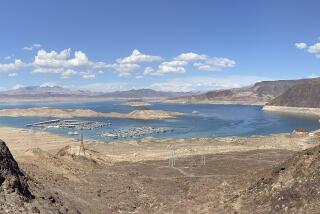Good, clean information
- Share via
SOMETIMES AN INFORMED PUBLIC is the best weapon. Such has been the case with something called the Toxics Release Inventory, which exists because of a 20-year-old law that requires companies to report the amount of toxins they release into the air and water each year.
Since the law has been in effect, toxic emissions have fallen by at least 60%. Much of this reduction is the result of public pressure on businesses -- public pressure that comes from public knowledge. One administrator from the Environmental Protection Agency has called the inventory one of the nation’s most valuable environmental tools.
Yet because businesses have complained about the paperwork involved, the EPA now suggests weakening the requirements in two ways. One would allow smaller polluters to list only which chemicals they release, with no information on how much. The other would allow all companies to report their emissions every other year rather than annually.
Much information would be lost with weakened rules, with little economic gain. Paperwork is always a burden, but in this case industry has failed to show it is excessive. At any rate, the cost of gathering this information certainly doesn’t outweigh the benefit of providing it to the public. The first rule change would seem to be negligible, because smaller polluters -- those that release less than 500 pounds a year of poisonous substances -- account for a tiny percentage of toxic emissions. But they tend to be located closer to residential areas, often poorer ones. And they often are owned by large corporations that can easily afford the tracking and paperwork.
Without knowing the amounts released, there’s no way to track whether pollution is rising or falling. The same would be true with alternate-year reporting, which would give companies an incentive to increase emissions in non-reporting years and decrease them in years when the paperwork is required.
Bad public information is even more troubling than no public information. These EPA proposals would set the stage for both.
More to Read
Sign up for Essential California
The most important California stories and recommendations in your inbox every morning.
You may occasionally receive promotional content from the Los Angeles Times.










